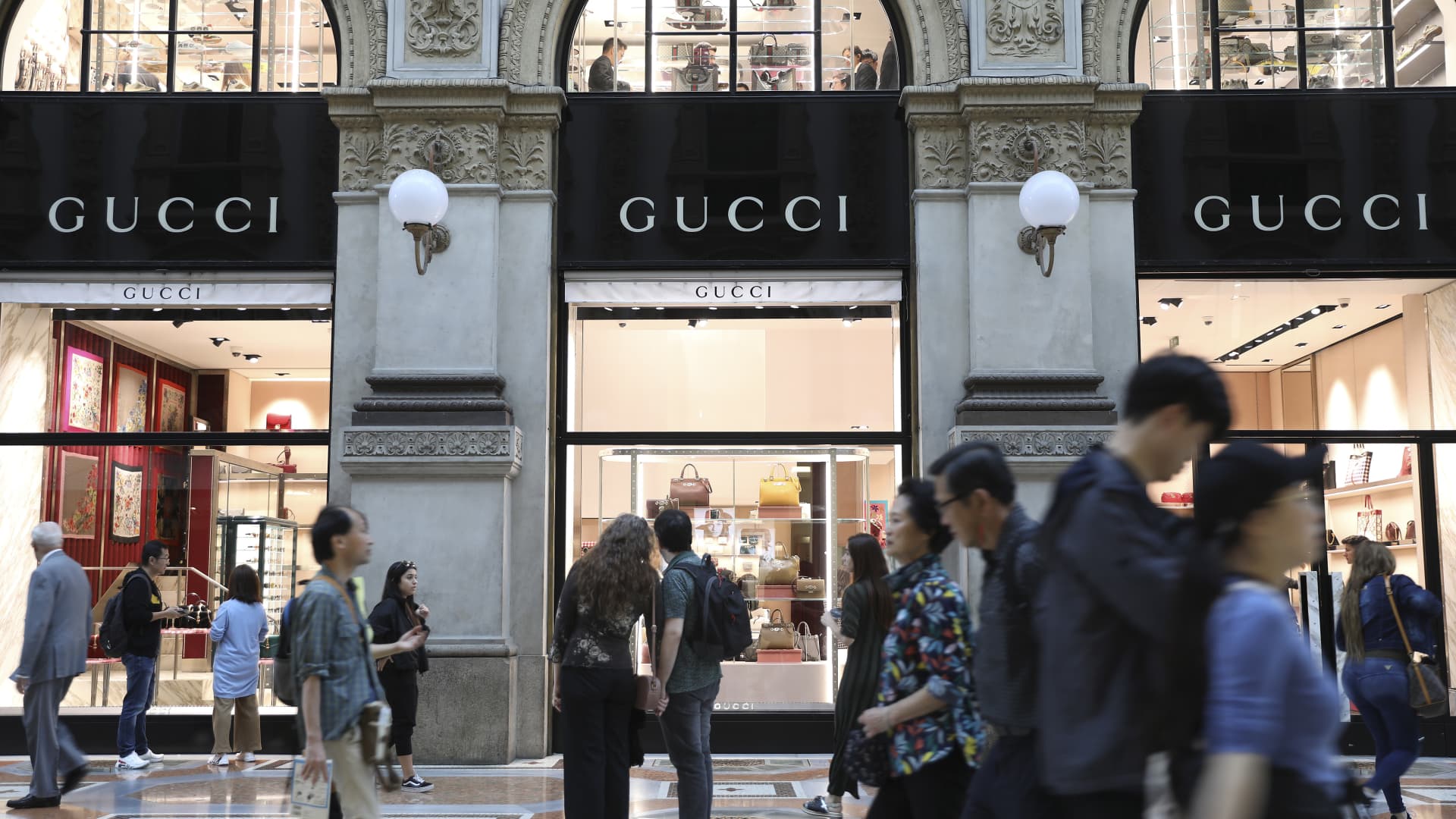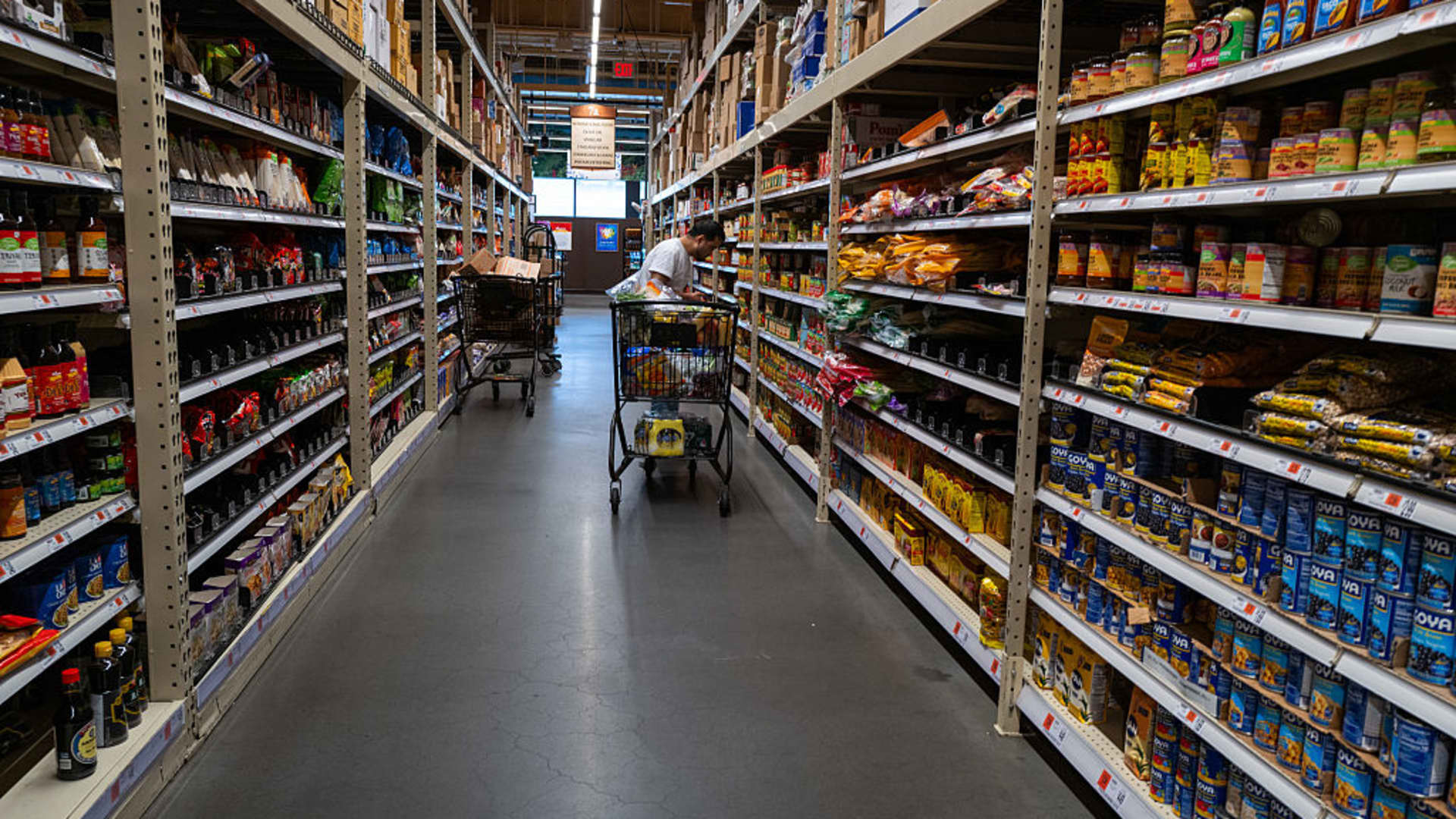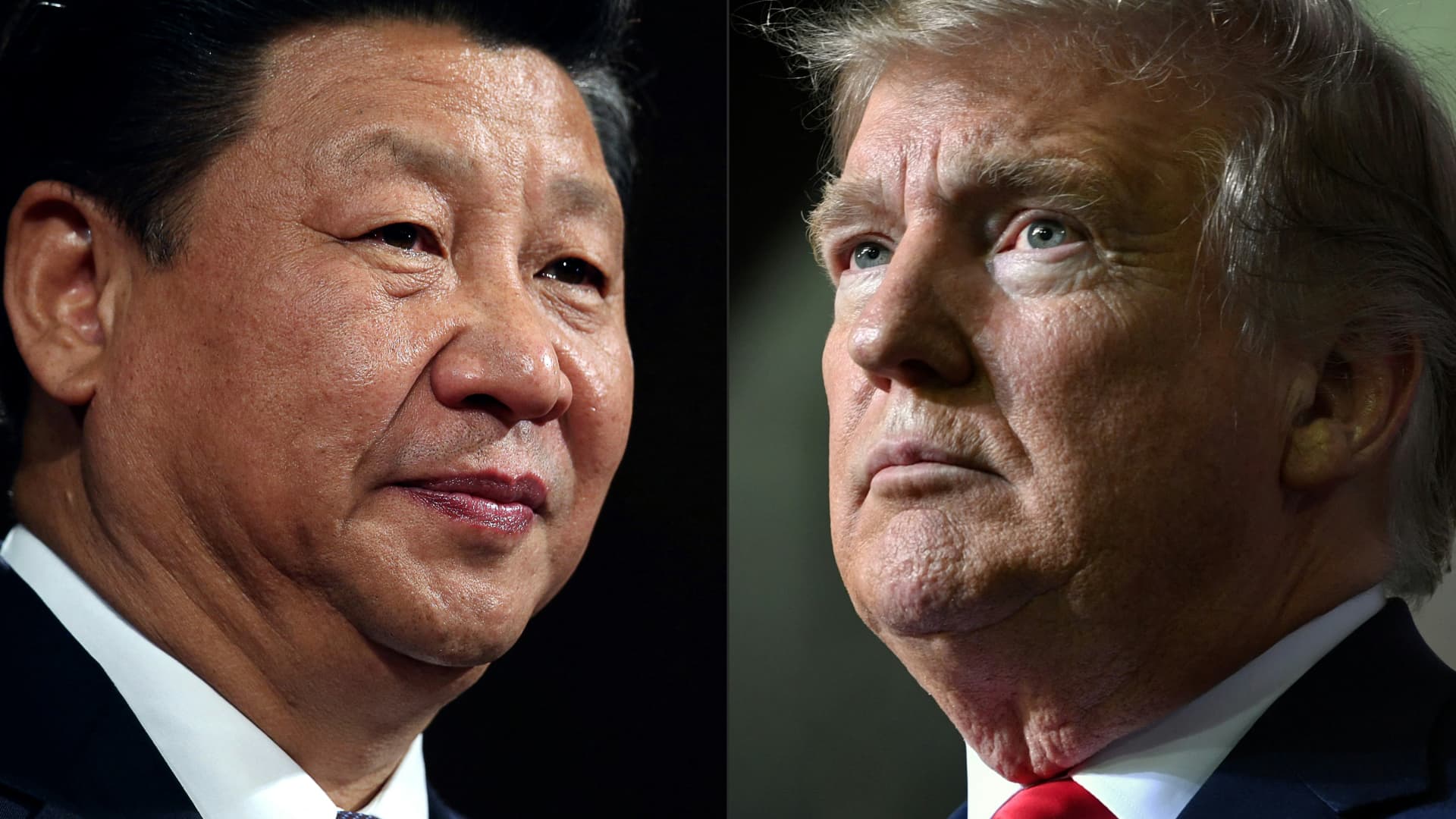A Gucci luxury goods store in the Galleria Vittorio Emanuele shopping mall in Milan, Italy.
Bloomberg | Bloomberg | Getty Images
Europe’s troubled luxury sector is showing signs of revival after an upbeat earnings season. But continued weakness in China — and the prospect of U.S. tariffs — could leave even the most exclusive brands vying for share of pocket.
“2024 has been one of the worst years for the sector. We believe there will be a sort of normalization going through 2025, particularly in the second half,” Simone Ragazzi, senior equity analyst at Algebris Investments, told CNBC via video call last week.
Birkin bag maker Hermes posted blowout fourth-quarter sales earlier this month, extending its outperformance at the close of a broadly upbeat earnings season, during which even embattled fashion houses LVMH and Gucci-owner Kering beat quarterly forecasts.
The results added weight to earlier forecasts of a long-awaited turnaround for the sector, after Cartier-owner Richemont last month posted its “highest ever” quarterly sales in the three month to December.
“The conclusion seems to be the worst is behind us – that was most likely the third quarter of 2024 – and we’re seeing a cyclical recovery in progress, driven by the U.S. consumers and European consumers, for the most part,” Luca Solca, senior analyst for global luxury goods at Bernstein, said via email.
U.S. tariff threats loom
Nevertheless, question marks remain around the recovery of Chinese consumption — a longtime pillar of the luxury market — and the prospect of U.S. tariffs hampering the sector and beyond.
Still weak China sales remained a recurring theme of fourth-quarter reports, with L’Oreal and Kering’s Gucci — two groups especially exposed to the market — highlighting declining sales in the country. Meanwhile, possible levies on European companies under U.S. President Donald Trump, coupled with broader macroeconomic uncertainty, were key features of earnings calls.
Zuzanna Pusz, head of European luxury goods at UBS, told CNBC that should extra duties be imposed, firms would likely look to pass those onto consumers via price hikes — something both Kering and Hermes signaled earlier this month that they may do. However, she noted that some companies would have a tougher time justifying additional price rises than others.
“We’re already coming off of heavy price increases. If firms were to have 25% tariffs, it will be hard to offset these,” Ragazzi agreed, noting that it could be “very painful” for some firms.
Europe’s luxury sector is unusual in that most of its operations cannot be replicated in overseas markets like the U.S. — a key intention of Trump’s import charges. Bestowing a “Made in Italy” label on a leather jacket, for instance, is contingent on the product being produced there.
That suggests that luxury firms could be exempt from the most punitive of measures, Pusz said. However, to the extent that trade levies hurt targeted economies, such as China’s — by increasing overall prices and hampering consumer sentiment — that could be a concern for the sector.
“Anything that would negatively impact the economy in China would be a risk,” Pusz said via video call earlier this month.
Divergence between the best and the rest
That, in turn, could worsen the existing divergence between the luxury market’s best and worst performing firms, analysts agreed.
“Whether tariffs or any other shocks, when a consumer has to buy less, they become even more selective, and they will take even more to the brands they like,” Pusz said.
Carole Madjo, head of European luxury goods research at Barclays, noted that some luxury brands had been punished lately for a “lack of innovation [and] high pricing,” and would be further obliged to justify their prices.
A gray leather Hermes Birkin bag at a street style fashion photo session, on May 16, 2024, in Paris.
Edward Berthelot | Getty Images Entertainment | Getty Images
“With the macro becoming more challenging for the consumer-base … they are buying less but buying better,” Madjo told CNBC’s “Squawk Box Europe” earlier this month. “The sector is now aware of all these issues and is trying to start to have some solutions.”
Analysts agreed that higher quality brands and those exposed to the higher-end consumer base are likely to remain in front, at least over the near term.
“Quality names may shine brighter amidst the industry’s idiosyncratic challenges,” Bernstein’s Solca said in a note last week, pointing to the continued strength of standout brands such as Richemont and Hermes, while citing Moncler and Burberry as growth prospects.
“The big question is what luxury means nowadays,” Ragazzi noted. “What is becoming even more evident is the good will or the heritage that brands had in the past has sort of disappeared.”











